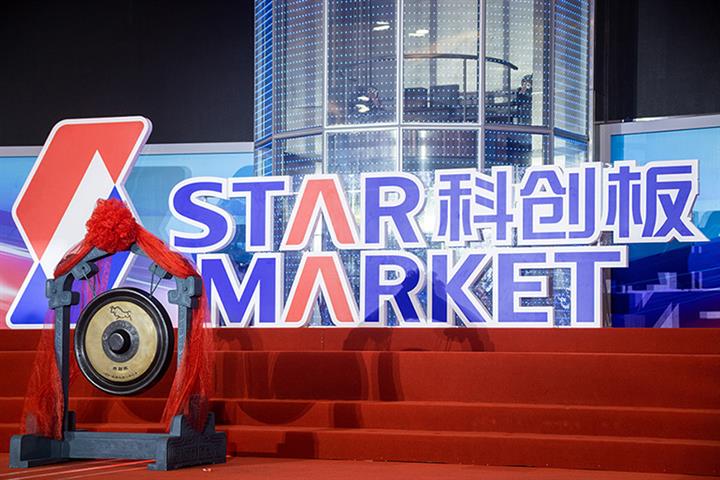 China’s Star Market Celebrates First Birthday, Opened Door to High-Tech Funding
China’s Star Market Celebrates First Birthday, Opened Door to High-Tech Funding(Yicai Global) July 22 -- The Star Market, the Shanghai Stock Exchange’s Nasdaq-like science and technology innovation board, is a year old today.
With a total market capitalization now in excess of CNY2.6 trillion (USD371.1 billion), it has tested reforms to the way businesses list, opening the door for more high-tech companies to connect with investors and has fortified their innovative mettle, insiders told Yicai Global.
“The Star Market has piloted registration-based listing and other listing system innovations, and accumulated much experience,” said Yan Hong, deputy dean of the Shanghai Advanced Institute of Finance. Breaking new ground, it is a milestone in the development of China’s capital markets, he added.
Over the past 12 months, the board has accomplished its two main missions, Yan said. They were to support the growth of tech innovators with potential and high market recognition and to reform the capital markets and gain experience that can be promoted and replicated. The reform not only cut the cost of transactions, but also increased the effectiveness of market pricing, he added.
The Star Market is more inclusive than China’s other stock markets. It supports the listing of unprofitable businesses and permits firms with different structures for voting rights and so-called Red Chips,those incorporated outside of the Chinese mainland, to go public. Its registration-based listing scheme has also helped tech firms to raise funds more conveniently and effectively.
‘Remarkable Thing’
“With the trial of the registration system, the Chinese capital market can finally meet the needs of companies with various economic forms and different technical requirements,” an executive of a Star Market-listed company said. “That is a very remarkable thing.”
Red Chips refer to those offshore ‘special purpose companies’ set up by founding shareholders of Chinese mainland companies on the British Virgin Islands and the Cayman Islands. These firms are then used as platforms for overseas financing. Before the Star Market, Chinese regulators set a high threshold for Red Chips to return to the mainland equity market.
Since trading kicked off on July 22 last year, the Star Market had accepted applications from 407 firms as of yesterday. Some 156 have completed the registration process, with 132 having debuted on the board, while 32 gave up and 219 are still under review.
The Star Market has seen many ‘innovative’ initial public offerings. China Resources Microelectronics, the first Red Chip to return to the mainland; UCloud Technology, the first with weighted voting rights; Suzhou Zelgen Biopharmaceutical, the first unprofitable business; and Suzhou HYC Technology, the first to buy another company.
“Allowing unprofitable firms to go public is particularly important for the large number of tech startups,” Yan said. “They need capital investment to support innovation and growth. Most of these early-stage companies are running at a loss. Investors care more about their prospects.”
More than 25 Star Market companies have not turned a profit in the past year.
Shanghai MicroPort Endovascular MedTech, which researches and develops interventional medical devices, got a boost from its Star Market IPO funding, according to President Miao Zhenghua. That was a great help since each of its projects has to wait for five to 10 years to be approved and investment is sizeable.
Editors: Tang Shihua, Peter Thomas